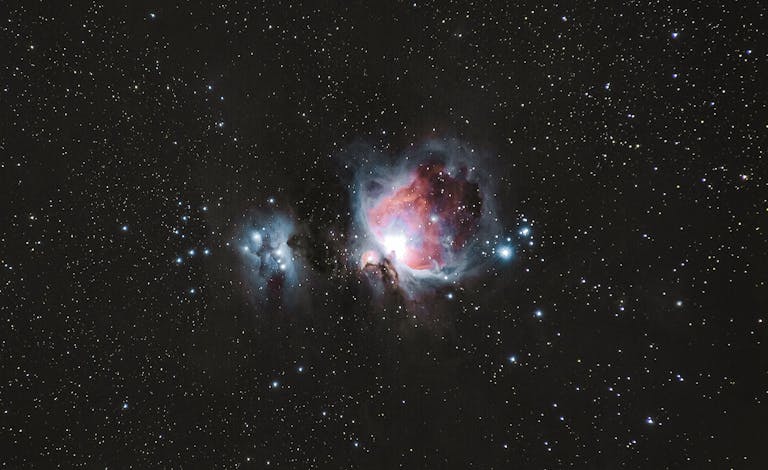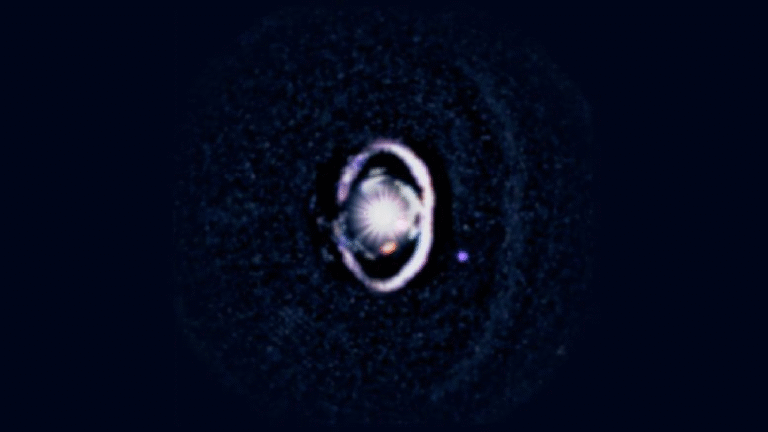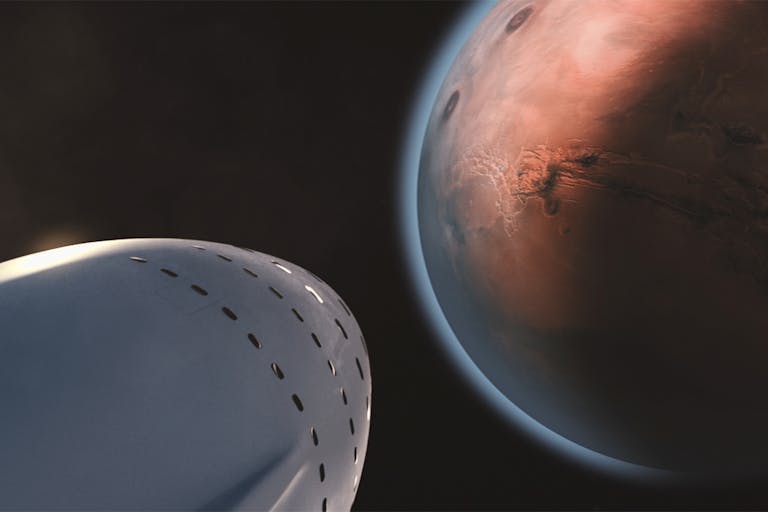Scientists Discover the Moon’s Far Side Is Much Cooler Deep Within — Here’s What They Found

For decades, scientists have puzzled over one of the Moon’s biggest mysteries — why its two faces are so different. The side that always faces Earth is smooth, dotted with vast dark plains called maria, while the far side is rough, heavily cratered, and mountainous. Now, new research based on samples brought back by China’s Chang’e 6 mission has added a fascinating piece to this puzzle: the far side of the Moon is colder deep inside than the near side.
This discovery goes beyond just surface differences. It points to something much deeper — a temperature divide within the Moon’s interior that may have shaped how it evolved over billions of years.
The Chang’e 6 Mission: A Landmark in Lunar Exploration
Launched by the China National Space Administration (CNSA), the Chang’e 6 mission made history in 2024 by collecting the first-ever rock and soil samples from the Moon’s far side. The spacecraft landed in the Apollo Basin, a massive crater within the South Pole–Aitken Basin — one of the largest and oldest impact sites in the Solar System.
After collecting around 300 grams of lunar soil and rock fragments, the samples were sealed and brought back to Earth for detailed laboratory analysis. This marked a huge step in lunar exploration because no mission before had ever returned material from the far side.
The samples were studied by a team of scientists from University College London (UCL) and Peking University, among others. Their research, published in Nature Geoscience, provides new insights into the Moon’s internal structure and the surprising differences between its two hemispheres.
What the Scientists Found
When researchers examined the composition of the far-side samples, they made a surprising discovery. The lava that formed the rocks on the Moon’s far side cooled at temperatures around 1,100 °C, which is roughly 100 °C cooler than similar volcanic rocks from the near side.
The samples themselves are about 2.8 billion years old, formed when molten material from deep within the Moon’s mantle erupted onto the surface and cooled into basaltic rock. These results mean that when those far-side lavas formed, the mantle underneath was cooler than the near side’s mantle at the same time in history.
The difference wasn’t small — and it’s consistent across multiple lines of evidence. Remote sensing data from satellites that mapped the landing region also suggest that the far side’s subsurface temperature was about 70 °C lower than equivalent regions on the near side.
How the Temperature Was Measured
To figure this out, the scientists used several advanced techniques.
First, they studied the mineral chemistry of the lunar basalts using an electron probe, which fires a focused beam of electrons at the sample. This causes the minerals to emit X-rays, revealing the precise chemical composition.
Next, they used ion probe analysis (also known as Secondary Ion Mass Spectrometry, or SIMS) to measure tiny variations in lead isotopes within the rock. Because uranium slowly decays into lead over time, this helped the researchers date the sample to about 2.8 billion years old.
Then, the team used thermodynamic modeling — comparing the mineral compositions to computer simulations — to estimate the temperature at which the rock originally crystallized. That gave them the formation temperature of around 1,100 °C.
Finally, they compared these measurements to data from near-side samples collected during NASA’s Apollo missions and China’s Chang’e 5 mission. Across the board, the far side samples consistently came out cooler by about 100 °C.
Why the Far Side Might Be Cooler
So, what’s behind this difference? There are a few main theories.
One explanation is that the far side of the Moon has fewer heat-producing elements. Elements like uranium, thorium, and potassium undergo radioactive decay, releasing heat over time. These elements are concentrated in certain parts of the Moon’s interior — but apparently, not evenly distributed.
On Earth, we know that radioactive decay plays a big role in keeping the planet’s interior hot. On the Moon, these same elements — collectively known as KREEP (short for potassium (K), rare earth elements (REE), and phosphorus (P)) — are thought to be heavily concentrated on the near side.
If the far side is missing much of this KREEP-rich material, it would naturally be cooler and less geologically active, explaining why there are fewer volcanic plains and more craters.
Another theory suggests that a massive asteroid or planetary body struck the far side early in lunar history. This could have redistributed material inside the Moon, pushing the dense, heat-producing elements toward the near side and leaving the far side depleted.
A third idea is that the Moon may once have had a smaller companion moon that eventually merged with it. In this scenario, each “proto-moon” could have had a different internal composition and temperature. When they merged, those differences might have persisted — creating the “two-faced” Moon we see today.
Finally, some scientists point to Earth’s gravitational influence. Since the near side always faces Earth, it experiences stronger tidal heating. Over billions of years, that constant pull could have contributed to a warmer near-side mantle compared to the far side.
The Mystery of the Moon’s Two Faces
The idea of a “two-faced” Moon isn’t new. Astronomers have known since the 1960s that the far side looks very different from the side we see in the night sky. The near side is covered with dark basaltic plains, created by ancient lava flows that filled large impact basins. The far side, on the other hand, has a thicker crust and is much more heavily cratered, with very few lava plains.
NASA’s GRAIL mission (Gravity Recovery and Interior Laboratory), launched in 2011, mapped the Moon’s gravitational field in high detail and confirmed that the far side’s crust is significantly thicker than the near side’s. This unevenness likely affected how heat escaped from the Moon’s interior and how magma moved toward the surface.
The new data from Chang’e 6 provide direct physical evidence that this asymmetry extends deep inside the Moon — not just at the surface. The differences in temperature, composition, and heat-producing elements suggest that the Moon’s internal structure has been uneven since its formation.
A Quick Look at How the Moon Formed
Most scientists agree that the Moon formed about 4.5 billion years ago after a catastrophic collision between the early Earth and a Mars-sized body called Theia. The debris from that impact eventually coalesced to form the Moon.
Early on, the Moon was likely covered by a global magma ocean — a deep layer of molten rock. As it cooled, minerals began to crystallize, and heavier materials sank while lighter ones rose to the surface. During this process, heat-producing elements like uranium, thorium, and potassium didn’t fit neatly into the crystal structures of the solidifying minerals. Instead, they stayed behind in the remaining liquid magma, which eventually became concentrated in certain regions.
If those regions ended up mostly on the near side, it would explain why the near side remained hotter and more volcanic, while the far side cooled faster and became geologically quiet.
Over billions of years, the Moon continued to lose heat very slowly. Because it doesn’t have plate tectonics or an atmosphere to trap heat, the Moon has been gradually cooling ever since — but unevenly.
Why This Matters
This discovery doesn’t just solve a lunar mystery; it helps us understand how rocky worlds evolve in general. Many planets and moons in the Solar System show signs of internal asymmetry — regions that are hotter, denser, or more volcanic than others.
By understanding the Moon’s thermal history, scientists can better interpret data from other bodies like Mercury, Mars, or even the moons of Jupiter and Saturn.
For lunar science, the findings could also guide future exploration and sample-return missions. Knowing that the far side has a different thermal and chemical history could help scientists choose new landing sites to study other parts of the Moon’s interior.
What Comes Next
The Chang’e 6 results are a major step forward, but scientists emphasize that this is just the beginning. With only one sample from the far side, it’s too early to say whether the entire far side is cooler, or if this temperature difference varies by region.
Future missions — including Chang’e 7 and Chang’e 8, as well as upcoming international collaborations — aim to collect more samples from different locations, including the lunar south pole.
In parallel, new satellite observations and computer simulations will continue refining our understanding of how heat moves through the Moon’s interior and how radioactive elements are distributed.
The ultimate goal is to build a complete thermal map of the Moon’s interior, explaining why its two faces developed in such dramatically different ways.
Key Takeaways
- The Moon’s far side mantle is about 100 °C cooler than the near side, based on Chang’e 6 samples.
- The samples are 2.8 billion years old, formed from ancient lava flows.
- Radioactive heat-producing elements (uranium, thorium, potassium) are concentrated on the near side, making it warmer and more volcanic.
- The far side has a thicker crust, fewer volcanic plains, and less KREEP-rich material.
- Possible explanations include uneven element distribution, ancient impacts, gravitational effects from Earth, or a Moon–Moon collision early in history.
- These findings give scientists new clues about the Moon’s thermal evolution and the origins of its striking asymmetry.
Research Reference:
A relatively cool lunar farside mantle inferred from Chang’e-6 basalts and remote sensing – Nature Geoscience (DOI: 10.1038/s41561-025-01815-z)





